Title: Mass and Environment as Drivers of Galaxy Evolution. IV. On the Quenching of Massive Central Disk Galaxies in The Local Universe
Authors: Chengpeng Zhang, Yingjie Peng, Luis C. Ho, Roberto Maiolino, Alvio Renzini, Filippo Mannucci, Avishai Dekel, Qi Guo, Di Li, Feng Yuan, Simon J. Lilly, Jing Dou, Kexin Guo, Zhongyi Man, Qiong Li, and Jingjing Shi
First Author’s Institution: Kavli Institute for Astronomy and Astrophysics, Peking University, Beijing, China
Status: Accepted to ApJ [open access]
Like people, galaxies go through a life cycle: they are born in the early Universe, rapidly form stars during their golden age — the cosmic noon — and eventually die by shutting down their star formation, or quenching.
How exactly a galaxy dies depends a lot on the life of a galaxy — and is a question of nature versus nurture. A galaxy could be quickly killed by its surroundings — if it happens to find itself in a dense cluster of galaxies, or if it collides with another galaxy. It could also die simply of old age on its own. This is what we call secular evolution, which is unaffected by other galaxies in the surroundings (check out these two astrobites for more discussion on nature versus nurture in galaxy evolution!)
Why do massive disk galaxies die alone?
Today’s paper looked at the evolution of massive disk galaxies: between 1010.6 and 1011 solar masses. For reference, the Milky Way is about 1010.6 solar masses. The authors were interested in secular evolution, so they chose galaxies that are either completely isolated, or are the biggest and the brightest galaxy in their local group, since the gas in these galaxies could not be stripped away by their environment. Using the Sloan Digital Sky Survey, they found 10,083 such galaxies in the nearby Universe.
The authors measured specific star formation rate (sSFR) — the number of stars formed per year per unit mass — using Hɑ luminosity in galaxies’ spectra to see whether a galaxy is still star-forming, quenching, or already quenched. Then, they looked at how the star formation rate correlates with three different quenching suspects: a central bulge, a bar, and a supermassive black hole lurking in the galactic core. So… choose your adventure!
Suspect #1: the compact killer — central bulge
Disk galaxies are made from two main parts: the main disk, known for its beautiful spiral arms, and the central bulge (Fig. 1, right panel). In the bulge, stars and gas live in a spherical gravitational potential, so they don’t move around on coplanar orbits like they do in the galactic disk. Instead, they move on randomly aligned orbits with velocities that depend on the density of the bulge. The denser the bulge, the higher the velocity.
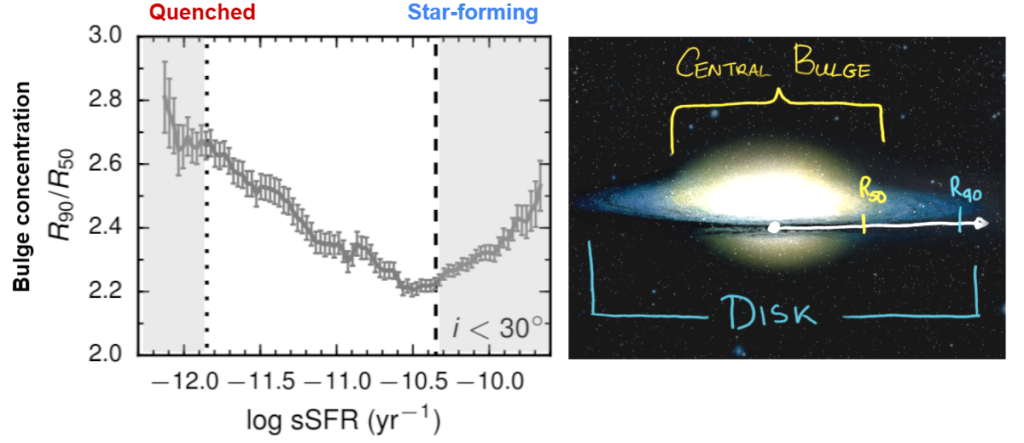
Image credit: NASA, and Hubble Heritage Team (STScI/AURA).
For a galaxy to form stars, it needs to have a reservoir of cold, molecular hydrogen gas. Now, the temperature of a gas is proportional to its velocity, so in more massive bulges the gas is hotter. If a bulge is too dense, the gas inside the bulge becomes too hot to form stars and star formation stops! The authors of this paper found that quenched disk galaxies have much more concentrated bulges with higher mass density and stellar velocities (Fig. 1, left panel), agreeing with this scenario.
But what causes a bulge to get denser? The authors suggest that at higher redshift, perhaps these galaxies experienced a collision with another galaxy, a disk instability, or it could be due to our next suspect…
Suspect #2: killer bars (bad place to have a drink)
…a central bar — a common galaxy structure shown in Figure 2 (right panel).They found that galaxies with lower star formation rates are much more likely to have a bar, making bars another possible culprit in galaxy murder case.

To figure out whether bars are just formed in dying galaxies or whether they are responsible for quenching, the authors looked at the fraction of quenched galaxies in barred and unbarred galaxies as a function of the central bulge concentration (Fig 2., left). They found that barred galaxies are always quenched: regardless of how concentrated their bulge is. Meanwhile, unbarred galaxies are only quenched if their bulge is dense enough. Therefore, a galaxy that develops a bar will die.
A victory for the bars! This astrobite describes in detail how bars can quench a galaxy: they perturb the normal circular motion in the galactic disk, and cause some of the gas and stars to flow inwards. This perturbation can heat the gas up, stopping it from forming stars. Bars can also help to build up the central bulge over time, pairing up with our first suspect.
But hold your horses, for there is a final culprit —
Suspect 3: Black Holes, of course
Active Galactic Nuclei (AGN) are the supermassive black holes in the cores of the galaxies. Black holes are extremely efficient engines: they release up to 40% of their energy back to the galaxy, heating the gas up and quenching star formation.
The authors of today’s paper used the Baldwin-Phillips-Telervich (BPT) diagnostic diagram to see if their galaxies host an AGN. A BPT diagram looks at how ionized the gas in a galaxy is — while stars also ionize gas, only AGN can reach high ionization ratios on the BPT diagram. The authors found that almost 100% of quenched galaxies are (un-)lucky owners of weak AGN called LINERs, while only 10% of star-forming galaxies have one (Fig. 3, left).

Their results show that supermassive black holes are hard at work quenching their host galaxies. The AGN activity the authors found is relatively weak — strong enough to keep the gas hot and so prevent star formation, but too weak to blow away the gas completely like in some more extreme cases (check out the nearby Centaurus A!).
…Or were they working together all along?
So which of these suspects is responsible for quenching our massive secular disks? The authors conclude that very likely, all three!
Bars can develop and heat the gas up, preventing it from forming stars. But bars also feed the central bulges — which in turn heat the gas up even more. To top it all off, the mass of the central black hole depends on the velocity dispersion in the bulge, so unlucky galaxies with stronger bulges have more powerful black holes as well. The work in this paper shows that, against such a fiesty group of quenching mechanisms, the star formation really didn’t stand a chance!
Edited by: Clarissa Do-o, Gloria Fonseca Alvarez
Featured image credit: M83, NASA/ESO/Hubble Space Telescope (adapted).

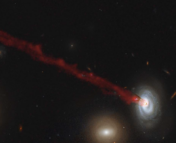
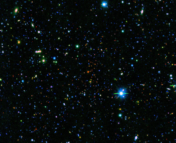
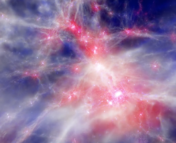
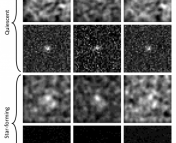
Using the Sloan Digital Sky Survey, they found 10,083 such galaxies in the nearby Universe.
how many of these 10,000
are in the milky way local bubble
are in the andromeda local bubble
how many bubbles are there for these 10,000 galaxies is it 1 10 100 1,000 10,000
and from your survey in these bubbles
what are the number of new born galaxies in same 1 10 100 1,000 10,000